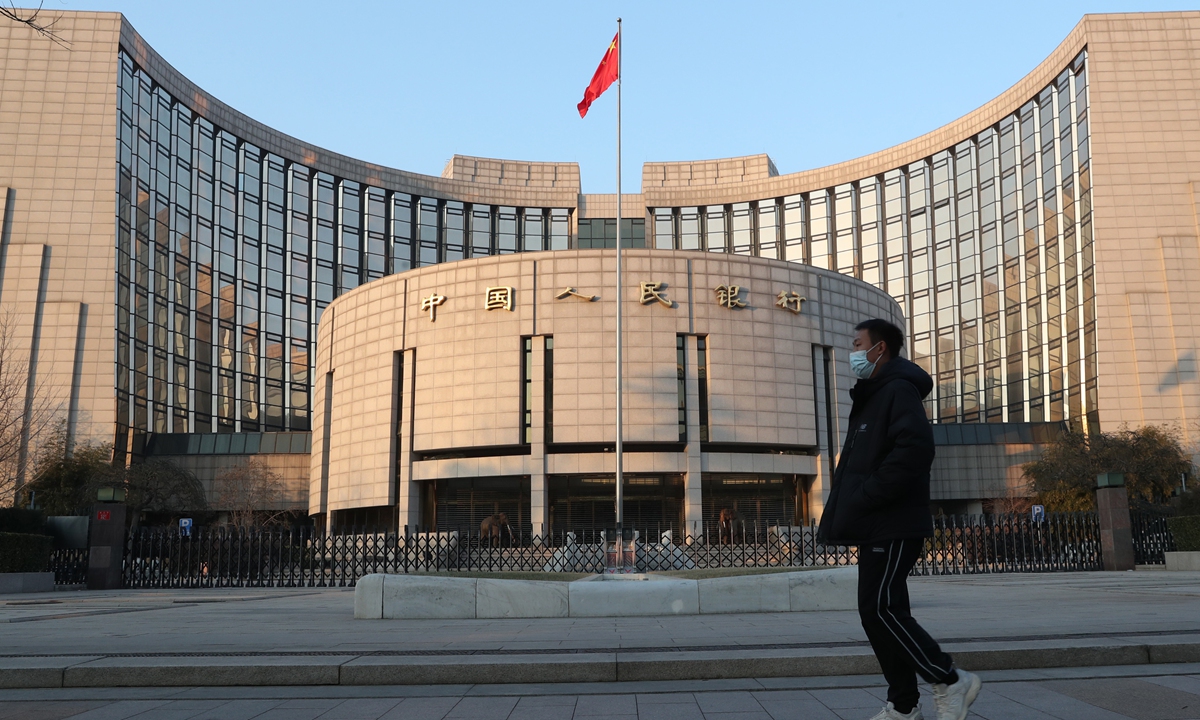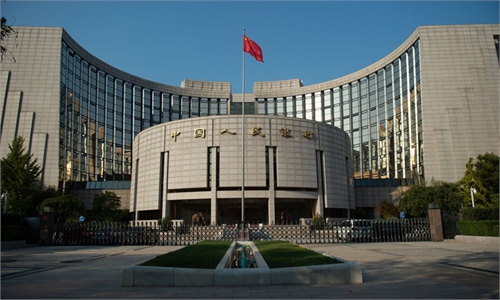
China's central bank Photo: CFP
China on Monday cut the benchmark one-year loan prime rate (LPR) by 10 basis points while keeping the five-year rate unchanged. This is also the second lowering of the 1-year LPR within the last 12 months, following a 10 basis point decrease in June, as the latest effort to boost economic growth.
The one-year LPR came in at 3.45 percent Monday, down from the previous reading of 3.55 percent in July, according to the National Interbank Funding Center, while the over-five-year LPR, on which many lenders base their mortgage rates, remained unchanged at 4.2 percent.
The one-year LPR interest rate was again lowered, followed a previous reduction in medium-term lending facility (MLF) by the central bank last week. This move is expected to stimulate financing demand, promote investment and employment activity, and enhance the country’s recovery momentum driven by domestic demand, Zhou Maohua, an economist at Everbright Bank told the Global Times on Monday.
On Tuesday, the PBC reduced the MLF, by 15 basis points to 2.5 percent. Meanwhile, the central bank also lowered the seven-day reverse repurchase rate, a short-term policy rate, by 10 basis points to 1.8 percent.
Zhou said that the five-year LPR was kept unchanged partly due to the pressure on net interest margins being felt by Chinese banks. Zhou added that maintaining stability to the 5-year LPR is crucial in order to prevent potential adverse effects resulting from a wider interest rate gap between new and existing housing loans.
With the LPR being lowered this month, officials have not ruled out leveraging other tools, with a possible cut in reserve requirement ratios (RRR) to increase support for the real economy, Zhou said.
During a press conference on July 14, officials from China’s central bank vowed to comprehensively utilize a range of monetary policy tools such as reserve requirement ratios, the medium-term lending facility, and open market operations to maintain the liquidity of the banking system, and ensure the reasonable growth of monetary credit.

